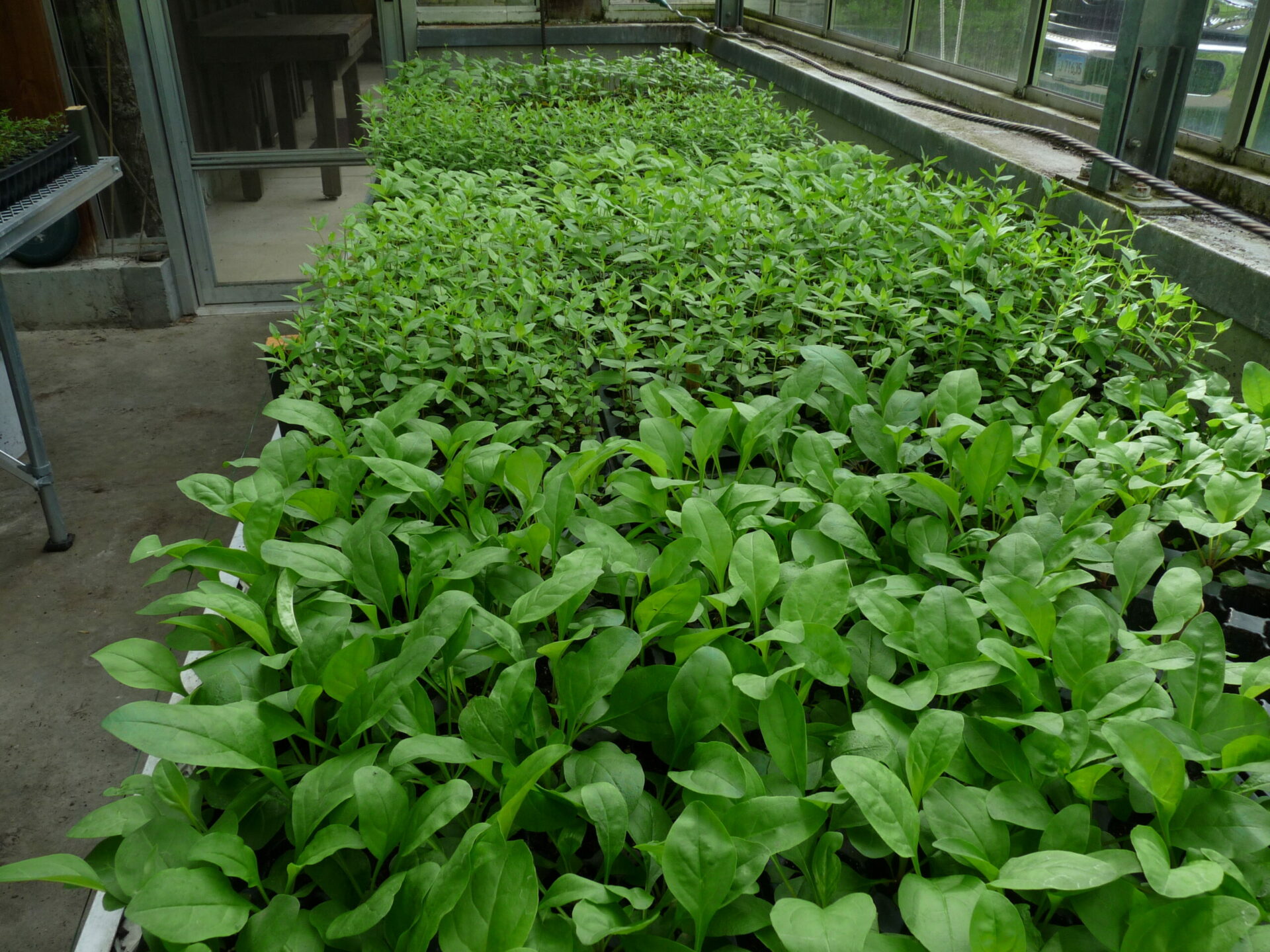As a land conservation organization with its roots in plant science, Highstead oversees the collection of diverse wild seeds for the Ecotype Project. These ecotype seed are the offspring of native plants possessing genes local to the region or “ecotypes” specific to our Ecoregion 59. These collections are fundamental to achieving the project goal to increase the availability of native plants across the Northeast. Led by the Northeast Organic Farming Association of Connecticut (CT NOFA), the project involves local seed collectors, botanists, farmers, propagators, planters, and more. Highstead is one of several partners who contribute their capacity and expertise to support the production and distribution of ecotype plants, even in the deep New England winter.
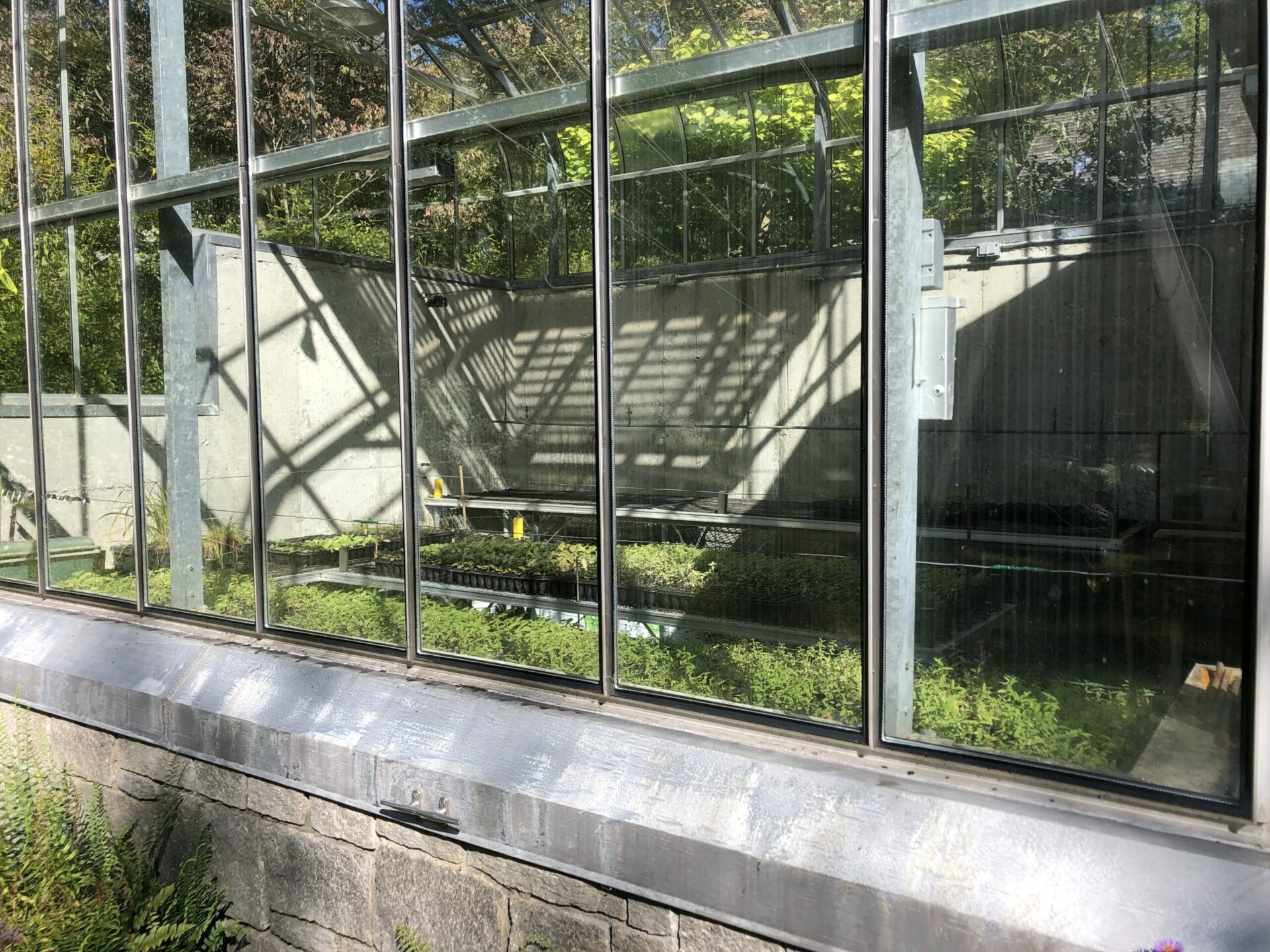
Seed Stratification
Even as the snow is falling, Highstead staff continue work on the Ecotype Project by following in nature’s tracks to learn how to grow the native seed. Some seed requires a complex series of environmental changes to get them to germinate. By observing nature, and through careful planning and coordination, staff conduct experiments to understand the exact growing requirements of the newly collected species.
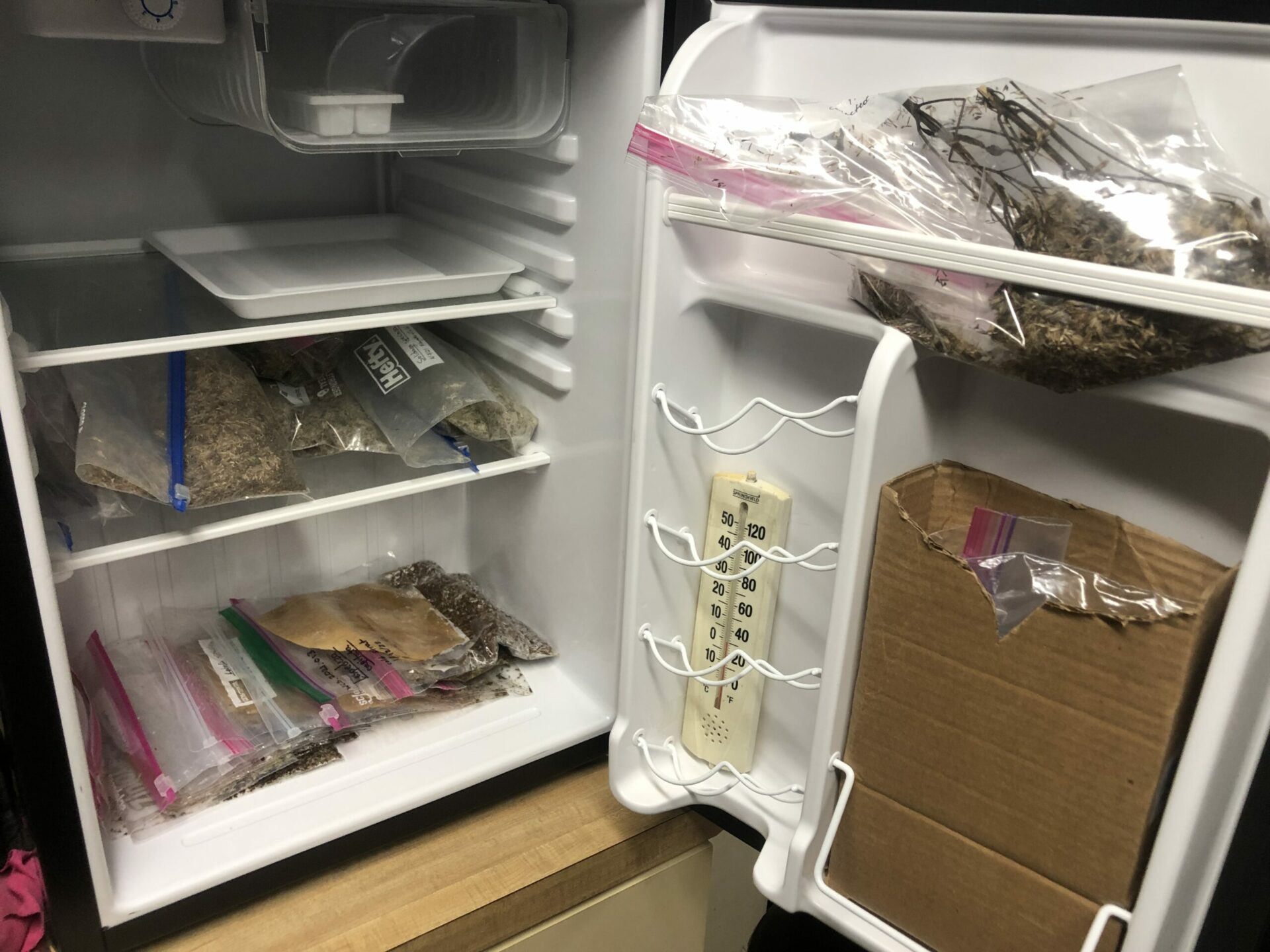
Once seed harvest is complete, seeds are cleaned and kept in cold storage until it is time to grow them, a period known as dormancy. Most dormant seed requires stratification to wake it out of dormancy and prepare for germination. Stratification is a process of treating seed to mimic the conditions of their natural habitat.
Several Ecotype Project plants require a period of cold stratification, where the cleaned seed is placed in a zip-lock bag with a moist paper towel (or coffee filter) and refrigerated. Highstead’s Grounds and Facilities Coordinator Jesse Hubbard explained, “Many seeds require around thirty days of moist and cold stratification, while others may take as long as sixty to ninety days. It depends on the species. Some seeds are straightforward while others are really fussy.”
One species being tended to at Highstead is black cohosh (Actaea racemosa), which is very appealing to a variety of pollinators, including the endangered Appalachian Azure butterfly. Black cohosh seed requires a period of double dormancy for germination to occur. This process involves two cycles of stratifying the seed in warm, moist conditions for 60-to-90 days, followed by another 60-to-90 days in cold, moist conditions. Jesse expanded, “It’s a delicate process and requires close monitoring to ensure the seeds don’t dry out or turn moldy. This is why most people will grow Actaea outdoors – they let nature do all the work, but we’re trying to grow it in a controlled setting. Actaea is tricky, and we’re hoping to find a protocol that works with some consistency.” Once perfected, artificial stratification can speed up the natural growing process which can take over a year in some cases.
Jesse shared examples of current and past ecotype crop species with known protocols that usually do not require stratification, like white wood aster. “Some of the wood asters may not need any stratification, but we do them anyway just to ensure the most germination possible.”
Operations Director Geordie Elkins emphasized the importance of testing and experimentation. “There are only a limited number of native plants that are common in the nursery trade and commercially available. There are many native species in the region, but many are harder to propagate and not as appealing to commercial growers. We test different methods and refine them so that when we recruit growers and farmers, we’re not just handing them seed, but we have some resources to help them succeed.”
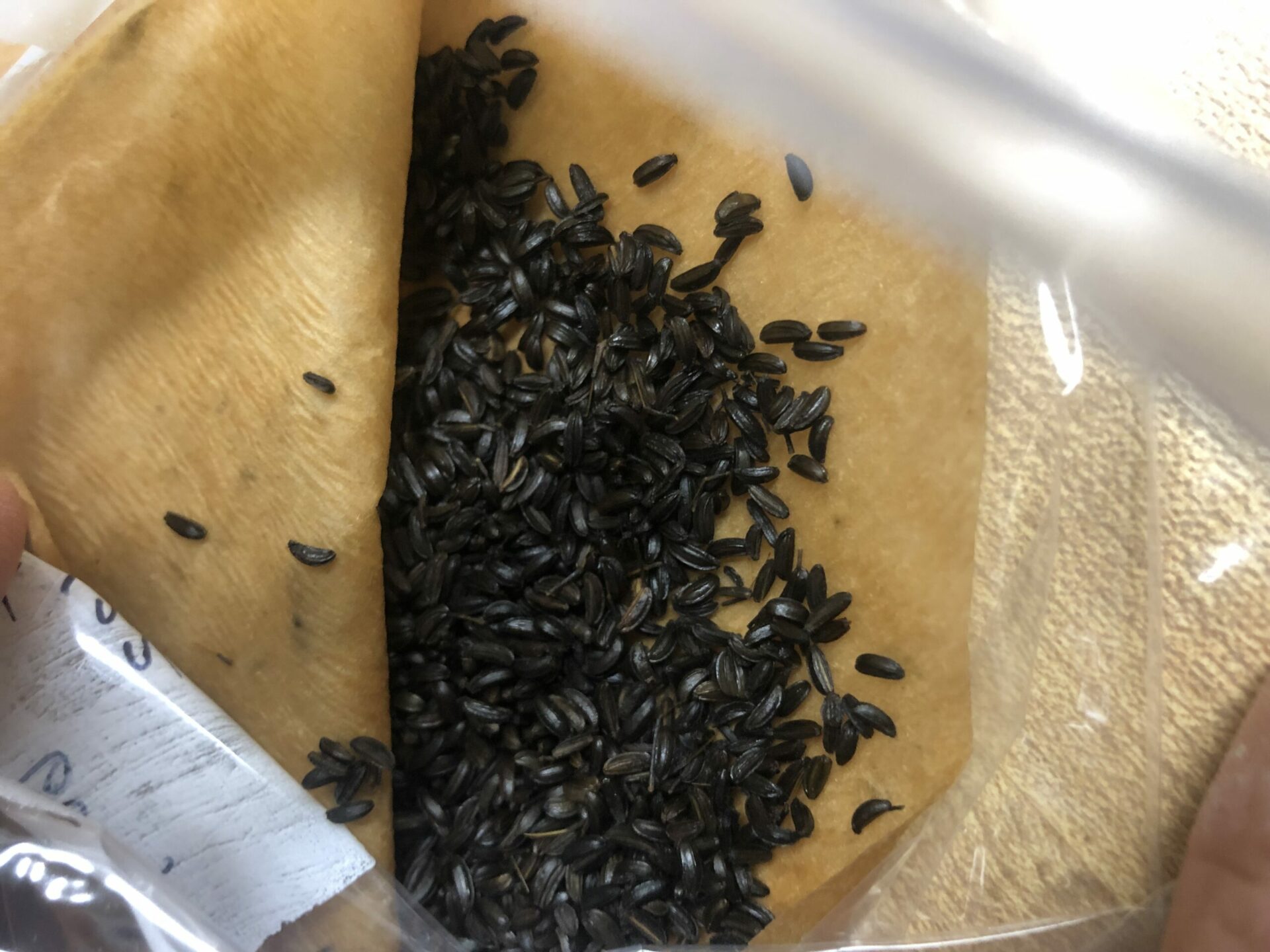
Greenhouse Growth
Between stratification experiments, protocol refinement, and rigorous documentation, Highstead staff tend to the greenhouse for the seed germination and growth phase. Landscape and Collections Manager Kathleen Kitka described the process, “Once the seeds are stratified, they are sowed into trays containing a seed starting medium. Next, the containers are placed on heated benches in the greenhouse; that’s where the germination chambers come into play.”
Jesse discussed the importance of the germination chambers. “We need to keep the soil consistently warm and moist as the final step to break dormancy and initiate germination. Bench heat with reflective insulation below will maintain necessary soil temperatures while the germination chambers maintain humidity and increase the efficiency of the bench heat and maintain humidity levels. We also ensure we have proper water drainage to prevent pooling from drowning the plants.” Once germination is complete, the trays must be removed from the chambers to prevent the new seedlings from rotting.
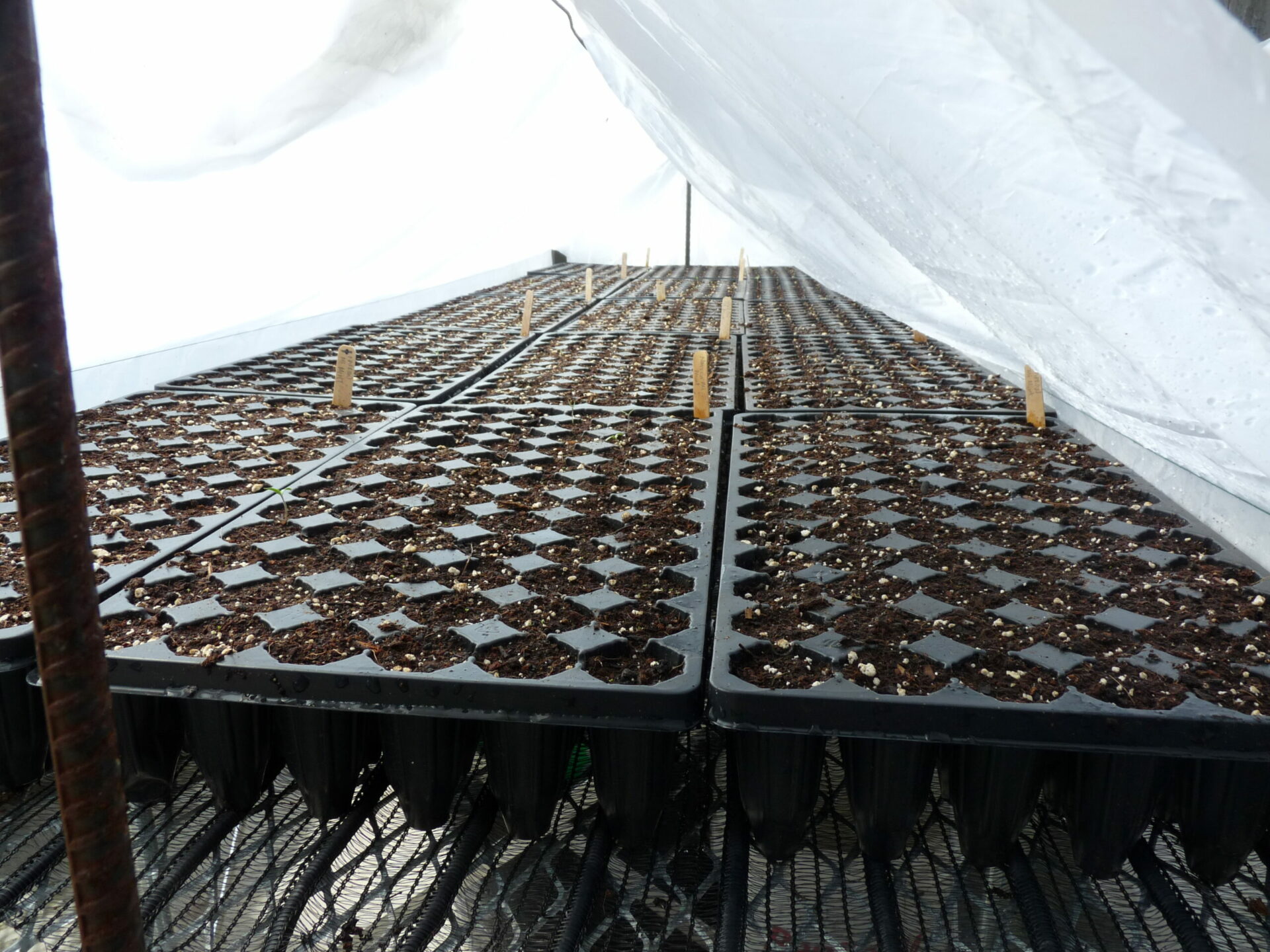
It will take about 12 weeks for the seedlings to grow into finished plugs. During this time, the staff is busy with various maintenance and establishment activities such as watering, fertilizing, pinching/thinning, and pest management. Controlling insects and diseases provides opportunities to experiment with practical methods and different OMRI (Organic Materials Review Institute) listed products. Jesse added, “With little air movement in the greenhouse, it’s an ideal environment for pests, so we’ll sometimes move trays outside in the summer.”
What’s Next
Following germination, the young native plants will travel to Founder Plots across Ecoregion 59, where local growers will increase the supply of available native ecotype seed by cultivating plots of two hundred plugs of the propagated and genetically diverse plants. Throughout the process, growers will report their progress and troubleshooting tactics. By harvest time, they’ll clean and count the seed in preparation for distribution to local nursery growers, pollinator pathway groups, conservation organizations doing landscape restoration, governmental agencies, and farmers.
Upcoming Ecotype Project Seeds
*This list is subject to change
| Genus species | Common Name |
| Lobelia siphilitica | blue lobelia |
| Sorghastrum nutans | Indian grass |
| Symphyotrichum leave | smooth aster |
| Symphyotrichum patens | late purple American-aster |
| Symphyotrichum novae-angliae | New England American-aster |
| Symphyotrichum lateriflorum | calico American-aster |
| Zizia aurea | golden Alexanders |
